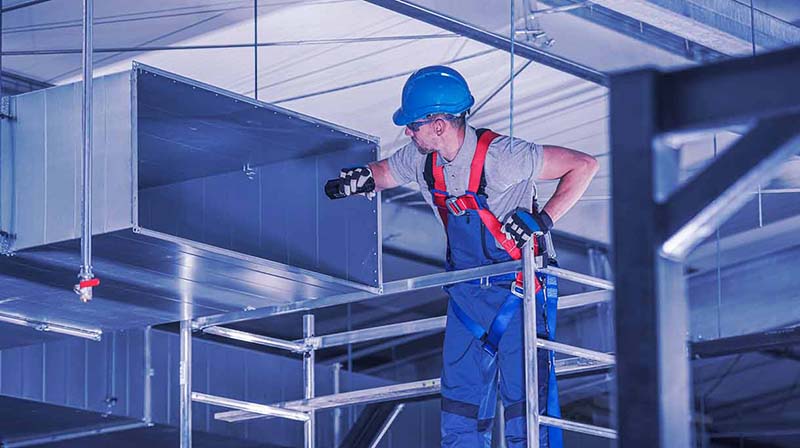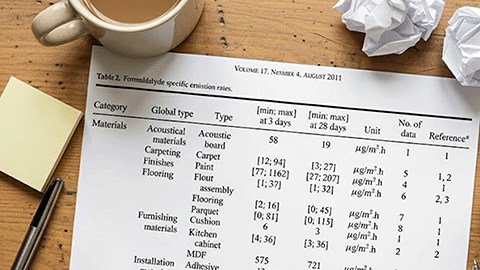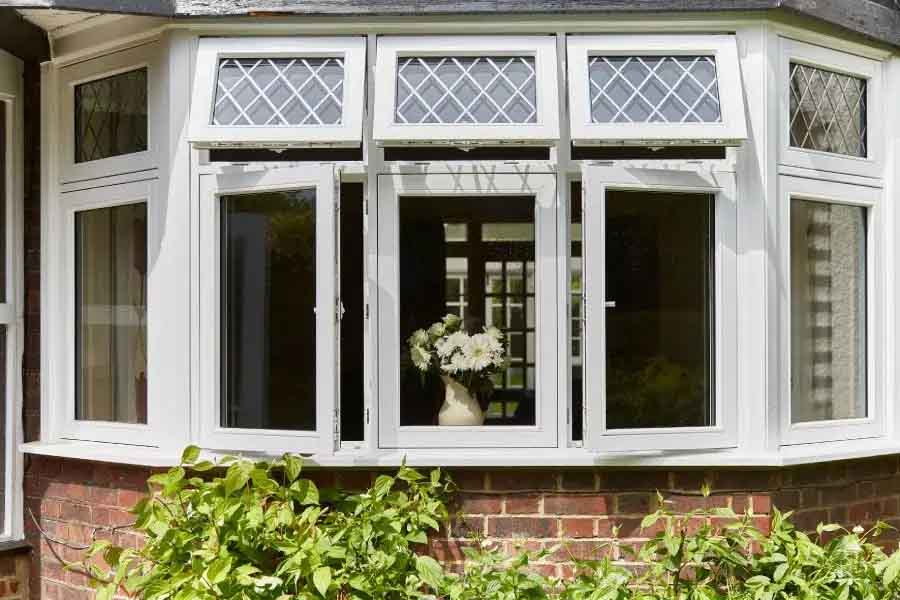Why Buying a CO2 Monitor for Your Workplace is Not Enough
When it comes to indoor air quality testing, CO2 monitors are an important piece of the puzzle, but they are just the starting point.
If you don’t apply the correct monitor for your situation, you could be wasting money and impacting your occupants’ wellbeing.
At ARM Environments, we believe in future-proof, long-term solutions to workplace indoor air quality. We see CO2 monitoring as just one part of a holistic approach.
We’ve put together this article to show you how to do CO2 monitoring properly, and introduce you to the other essential testing methods and equipment for assessing your building’s indoor air quality. Including:
- CO2 monitoring
- Indoor air quality monitoring (for PM and VOCs)
- VOC, NO2 and formaldehyde sampling
- Ventilation verification via traverse duct readings
- Airflow validation via aerosol tracing
Only doing enough for compliance
If you’re testing your workplace indoor air quality (IAQ), it’s probably because you want to comply with the mandated guidance. And one basic way to check for indoor pollutants is to place CO2 monitoring devices around your building.
Don’t get us wrong. Testing for carbon dioxide is a good in-the-moment indicator of air quality, since high CO2 often signifies poor ventilation and a likelihood of high levels of other contaminants in the air. However, if there are no occupants in the space, CO2 levels may be low, but the air quality could still be poor from other pollutants.
The reality is, there are many other factors that need to be considered.
How big is your office, or your factory, or your hospital? Does it have a mechanical ventilation system? How many occupants are there at any one time in each room?
All of these questions will have a bearing on how to properly test the indoor air quality of your workplace.
If you truly want to keep your tenants, visitors, occupants and employees safe, and comply with UK regulations, you will need to go a step further.
How to test your indoor air quality
At ARM Environments, we test towards AirRated’s benchmark for indoor air quality, called AirScore. It’s a simple and reliable measure for indoor air quality and includes 5 main parameters.
- Humidity – This is the concentration of water vapour in the air, affected by people breathing indoors. It alters the level of biological pollutants (like mould spores) in the air, which can affect health and comfort. Studies have found workplaces with low or high humidity experience more sick days due to respiratory infection.
- CO2 – Carbon dioxide makes up 0.04% (400ppm) of the air we breathe. Indoors, it comes from people breathing and combustion, e.g. gas boilers. Occupied indoor CO2 levels are significantly higher than outdoors.
The legal limit indoors is 5,000 ppm over an 8 hour period, but health and comfort are affected at much lower levels.
Studies have shown that high CO2 significantly reduces cognitive function and can cause an 11% drop in productivity. Even very low levels of CO2 can worsen respiratory problems.
The UK government's Education & Skills Funding Agency has made a handy calculator to estimate CO2 concentration build up in simple spaces. Though it was made for school classrooms, it is also relevant for any occupied space, such as meeting rooms and offices. You can download the tool below.
Download CO2 Concentration Build Up Calculator
- TVOCs (Total Volatile Organic Compounds) – A collective term for a wide range of chemicals, including benzene and formaldehyde. They may be emitted over periods of weeks or even years after construction, from chemical products such as sealants, paints, cleaning products and air-cooling refrigerants.
Short-term exposure to high TVOCs can cause eye and airway irritation, headaches, dizziness, blurred vision and memory impairment. Long term, they can cause damage to the central nervous system and even cancer. They have also been linked to allergies, asthma, and poor respiratory health. - Temperature – Research shows that office work performance is maximised at 21°C to 22°C. For every degree above 25°C or below 19°C, productivity declines by 2%. Too low or too high, it can contribute to headaches, itchy skin, dry or sore eyes, blocked or runny noses and rashes.
- PM 2.5 – These fine particles can easily penetrate into the lungs and bloodstream, causing irritation of both upper and lower airways, as well as cardiovascular issues. These issues can reduce life expectancy.
Although the World Health Organisation (WHO) has set a guideline of 10μg/m3, there is said to be no safe level of PM2.5, indoors or out.
Employ detailed CO2 monitoring
Testing for CO2 is still very important, as it indicates where there is poor ventilation in your building.
For workplaces where occupants are in control of their ventilation – either through opening windows or user-controllable mechanical ventilation – all you need is a monitor that visually displays the CO2 level and alerts occupants when they need to increase the air flow.
But, people are often not in control of their ventilation. In this case, their CO2 monitor is just showing them a problem they cannot fix and putting them at loggerheads with the building operator.
This is particularly relevant in schools. In August 2021, the government announced all state schools would get CO2 monitors, but this didn’t take into account the many schools that were not in control of their ventilation. Critically, it did not help those teaching vulnerable students with special education needs and disabilities, whose environments need to be calmer and more regulated. Windows need to be kept shut to stop excess noise.
Always log and analyse the data
Bad data is worse than no data at all. If it’s not easy to understand, it’s hard to know the right course of action. And measurement is only as good as the actions you take.
Typical occupants without control over their ventilation lack a good understanding of IAQ data. If your CO2 monitor does not visually display easy-to-understand measurements, placing the onus of remediation on them can cause problems.
For example, before we were brought in to help, a teacher at a school in Bournemouth took several sick days for CO2 poisoning because the CO2 monitor was reading 900ppm. Even though illness only occurs at more than 40,000 ppm – impossible for a room of students. 900ppm to the untrained eye is a big number, but on a CO2 sensor with an easy to understand “traffic light” system, this figure would normally be green, indicating good air exchange.
Long-term remote tracking and logging of data is critical as CO2 comes from people breathing, so testing an empty room is useless. An alarm can be confusing to the uninitiated or just irritating (potentially causing users to stop using the systems.) Your data should enlighten rather than annoy.
An effective CO2 monitoring solution should include:
- Remote monitoring by facilities and estate managers, particularly if occupants are not in control of their own windows or ventilation systems
- A visual display (if occupants are control of windows)
- An audible warning (that can be snoozed/deactivated)
- Multiple sensors throughout the building
Go beyond CO2 monitoring with enhanced testing solutions
In addition to CO2, there are still the four other key parameters that impact your overall indoor air quality. Humidity, temperature, TVOCs and PM 2.5.
A typical carbon dioxide sensor will also check for humidity, temperature and even atmospheric pressure (a slightly higher pressure indoors improves circulation) as they are inexpensive additions.
That leaves the most dangerous to health, VOCs and PM 2.5, unmeasured. To run comprehensive testing, you should consider these solutions too.
Indoor air quality sensors: Buying a sensor that detects particulate matter and VOCs is critical to maintaining long-term health in your building. But you should make sure the sensor you buy collects and displays the data in an easy-to-understand way. One that simultaneously gives access to the outdoor air quality at the same time can also help you know when it’s safe to open your windows.
Ventilation verification: Whether your building is occupied or not, bringing in an expert for a detailed inspection of your building’s ventilation can give you a clearer picture of how it is operating. Changes to the building over time, and improper maintenance can significantly alter the ventilation provided throughout a building.
Aerosol tracing: For a high level of information on your ventilation’s efficacy, you can use aerosol tracing. By releasing harmless, trackable particles into your spaces, you can see exactly where the hotspots for poor ventilation are in your building in real time.
We recommend the SafeTraces veriDART solution because of its easy to read data visualisation.
Sampling & Analysis: To find out exactly what pollutants are in your indoor air, this service takes samples for specific gasses that are analysed in a lab.
Traverse duct readings:. A traverse reading measures the airflow across a cross sectional area of the duct. This is a way of accurately verifying what volume of air is being supplied to a particular area of the building.
Not as pricey as you think
Investing in a solution that complies with the latest guidance, makes life easier for facilities managers and landlords, and better maintains the health and wellbeing of its occupants, is not as expensive as you might think.
In our experience, when you compare an integrated IAQ monitoring solution to simply using CO2 monitors, you will only be spending around 50% more. But you will have a much clearer picture of what is in the air you are breathing.
In the end, we always opt for long-term peace of mind.






